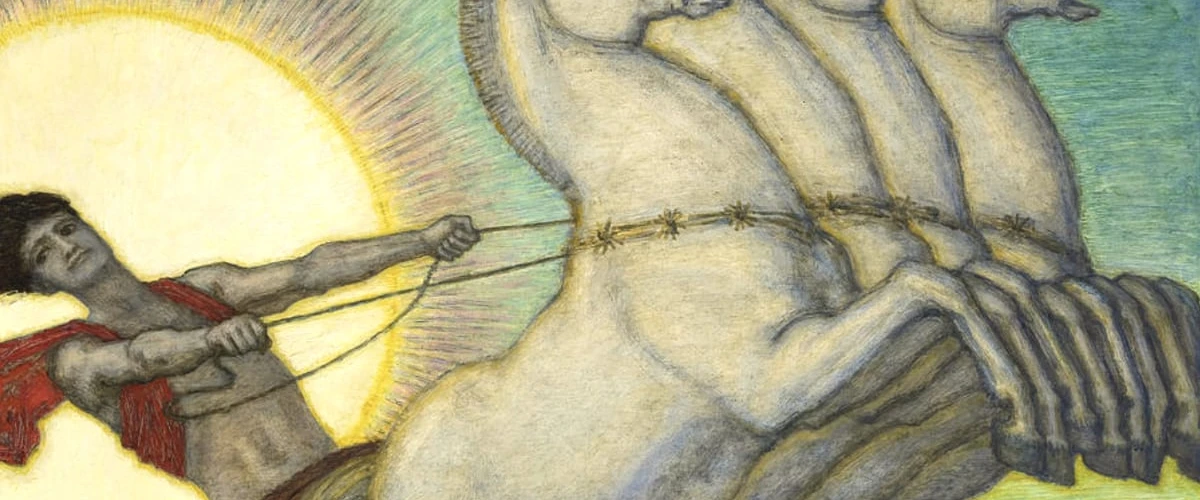
Understanding Life after Death
I certainly wouldn’t have read this book if it hadn’t been for the recommendation of the philosopher Bernardo Kastrup. Already the title may raise some eyebrows – Why an Afterlife Obviously Exists: A Thought Experiment and Realer Than Real Near-Death Experiences near-death experiences more real than real) –, and the cover is decidedly sweet.
The author proposes a thought experiment which can be summed up somewhat simply here by this:
Imagine a room designed by a team of brilliant scientists and infinitely funded by the ultra-rich. You see, the project is pharaonic. From this room, no one can enter without being invited. The input mode is secret, as is the output. It is impossible to circumvent the system. The piece is a technical masterpiece. It is also impossible to know who will be able to enter the room.
The selection is random, scientific. We do not omit any stratum of society, any region of the planet, and social status, any type of personality, healthy people, sick people, crazy people, poets, politicians, etc.
No one knows what’s in the room, not even the scientists. We don’t know if there really is anything. The content was designed by an artificial intelligence whose memory was subsequently erased (here, I extrapolate the example of the author). The AI had all the means to invent something (it’s pharaonic, I tell you).
The experience lasts for years. People come in, spend some time in the room, and are taken out. All they are asked to do next is to report what they saw. Note that there are four types of "visits."
- A person is given everything needed and enough time to visit the room.
- Another is given everything to visit the room, but very little time to do so.
- The person is given little time, but with the means to explore.
- We give very little time and very few means to do it.
People will say to me, all this is impossible. You are wrong; it is all in a thought experiment. Many discoveries have come out of such experiments. But anyway, back to our scientists and their rich sponsors.
The results are being collated as we go along. It appears that all of them, without exception but to varying degrees, report the same thing.
- The experience was gripping, realer than real.
- Many saw a pink elephant in the room.
- For some, seeing the elephant was terrifying, but most were fascinated and came away changed.
- People in the first two categories had a clearer experience than others.
Our scientists are puzzled because they didn’t really expect this. There is no such thing as a pink elephant, and how come it has such an effect on people? Some people find something other than an elephant, and the more people you bring in, the more confusing it becomes, but by extrapolating the experiences, you can bring it down to constants.
- A wonderful thing exists.
- It is an experience beyond what is perceived in a dream or during a hallucination.
You can probably guess the connection with the theme of the book.
- Thousands, if not millions, of people every year, but also throughout the centuries, have had a near-death experience (NDE).
- These people come from all shades of life and have had their experiences in equally random ways.
- In researching the experiences of these people, a scale can be established that measures various conditions that define an NDE. The total is out of 32:
- The profound experience (24-32 points)
- The middle experience (15-23 points)
- Subtle or fuzzy experience (7-14 points)
- The inconclusive experience (0-6 points)
The results are as follows and are of course graded by the magnitude of the experience:
- People live in a reality that they describe as more real than real. It is not like a dream. Everything seems logical, clear, unruffled.
- Everything is bright, sublime.
- There are other people, beings.
- People with scores of more than 23 points are convinced of the existence of life after death. Those between 14 and 23 are also fairly certain.
- Even those who scored between 7 and 14 are shaken.
The purpose of this book is not, despite the title which seems to say otherwise, to prove that life after death exists, as near-death experiences raise more questions than answers. The author suggests that it would not be at all irrational to listen to what these people have to say, since their testimonies point in the same direction.
The book reads well, the tone is calm, without artifice. The man is a philosopher and invites us to listen.
Those who come back from such experiences probably have to filter the wide range of their experiences with the ignorance attached to their words. It seems that many remain silent because they cannot express what they have experienced or because they are laughed at.
I want to hear these people. But I feel like Job and I’m already complaining. Why should this exist? Why must we suffer, enjoy, cry, and laugh in this world if it is to return in the end to a universe more wonderful than all paradises? Why this cycle, this fall and rise? Too much happiness up there, it’s boring? Many religions have tried to formulate explanations that always break on the rock of ultimate incomprehension.
And the fly that I just knocked out to the point that its little heart stopped for a while before starting to beat again, what did it experience? The same light?
